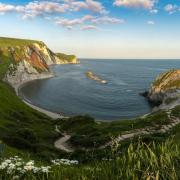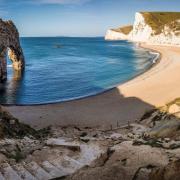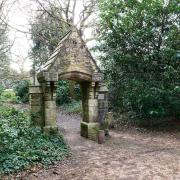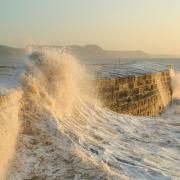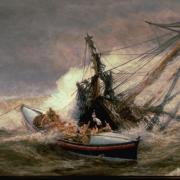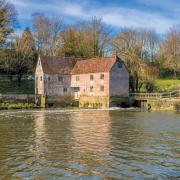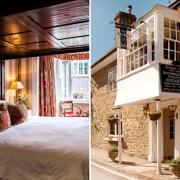Without the Cobb, the thick stone breakwater, Lyme Regis might not exist. Surrounded by unstable cliffs liable to slippage, the Cobb provided the town with a harbour and the means to earn a living. Medieval in origin, it enabled Lyme to establish itself as port trading wool for wine. But Victorian Lyme was a pale shadow of the bustling Elizabethan town. The shallow harbour proved an obstacle as ships grew larger, and the town’s position left it bypassed by the railway until the early 20th century.
The importing of coal, principally for the gas works, combined with the exporting of limestone from the cliffs west of the town, prolonged Lyme’s life as a commercial port for a while. The cement factory on Monmouth Beach was a major employer, but the invention of Portland cement and the arrival of the railway in 1903 saw its demise. By then not a single merchant ship was registered to Lyme Regis, and the most familiar boats alongside Victoria Pier were paddle-steamers of tourists from Weymouth.
Lyme’s 19th century reinvention as a coastal resort was dependent on visitors. Like its more fashionable neighbour, Weymouth, the process had begun with the health benefits of sea-bathing in the late 18th century. In due course Lyme acquired a promenade, grandly named the Marine Parade, linking the town to the Cobb. Assembly Rooms opened, in which the new arrivals could dance and put on musical evenings. Lyme’s mild climate made it a ‘great inducement for invalids to make it their residence,’ whilst their healthier companions could either play tennis on the new courts overlooking the Cobb or set out with hammers in search of fossils left exposed by the frequent cliff falls between Lyme and Charmouth.
By 1901 the cloth mills, net and twine works, and shipbuilding yard had closed; as the number of ships entering the Cobb dwindled, so too did those who earned a living from the sea. The opening of the Axminster and Lyme Regis Light Railway in August 1903 saved the town. Within two years 2,000 visitors a day were coming to Lyme during the summer months, turning it into what it has been ever since, a town dependent on tourism, even though the station shut in 1965.

Lyme Regis...present
Film Set: The Cobb is where The French Lieutenant’s Woman, Jane Austen’s Persuasion and Wonka were filmed. The harbour and beach were locations for Ammonite about local fossil hunter Mary Anning.
Mary Anning: A bronze statue of this trailblazing 19th century female palaeontologist was unveiled in 2022 on the seafront. Discover more about her in the Mary Anning Wing at the town’s museum. lymeregismuseum.co.uk
Belmont: This maritime villa in Lyme belonged to 18th century businesswoman, Eleanor Coade, who mass produce architectural embellishments which cover the house. John Fowles, author of The French Lieutenant's Woman also lived here. landmarktrust.org.uk




